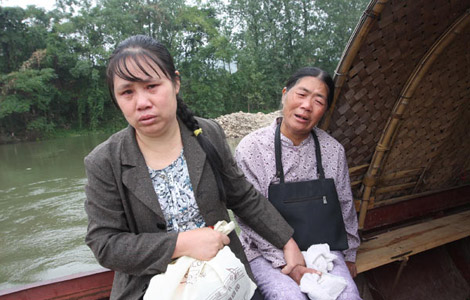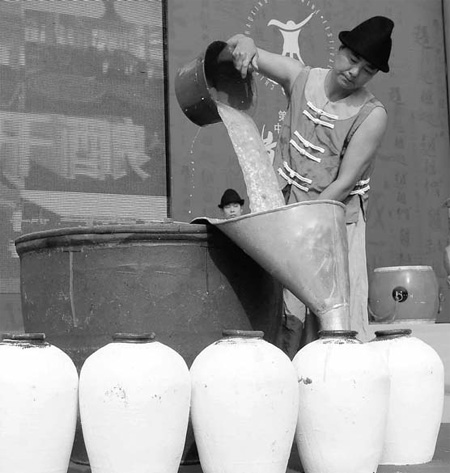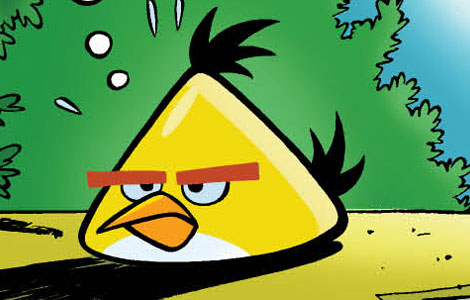Festive toast to the moon
Updated: 2011-09-11 07:46
By Pauline D. Loh (China Daily)
|
|||||||||||
|
A huangjiu brewer shows the process of making the liquor at the opening ceremony of the 16th China Shaoxing Huangjiu Festival in Zhejiang province on Nov 7, 2010. [Photo by Song Haojian / for China Daily] |
BEIJING - Chinese wine culture is old as history, and there is a trove of wine tales that is probably delved into every time friends and family gather around some fine vintage.
When the moon is mellow and yellow, when the crabs are full of roe and milt, when the chrysanthemums are blooming as large as the moon and perfuming the garden with their subtle scent, it's time to break open the earthen jar of nu'er hong or virgin red.
Virgin red? That's the name of a famous yellow wine from Shaoxing, Zhejiang province, where it is customary to brew a batch and bury them underground for at least 18 years or until the daughter in the family marries. These jars would be broken into and served to guests at the wedding feast - hence the name.
If it was a son, the same batch of wine would be named "scholar red" and served at the celebratory feast thrown for the child when he rises to expectations and scores well in examinations.
No one knows when this tradition really started, but it has been for as long as the wine-makers of Shaoxing can remember.
Drinking has been associated with scholarship and the arts since recorded history, and at the height of Chinese culture during the Tang and Song dynasties, poets and courtesans, moon and blooms, fine wine and good food inspired and were inspired in poetry, painting and music.
The Tang poet Li Bai was as much known for his works as for his love of the cup. One famous tribute from his fellow poet Du Fu was a four-line seven-character poem that described it best.
"A jar of wine inspires Li Bai with a hundred rhymes.
And in the Chang'an wine shop, he slips into drunken slumber.
The Son of Heaven summons, but he refuses to board the boat.
Simply saying: "Your humble servant is but a deity of wine."
And in the operatic repertoire, The Drunken Concubine tells the tale of Yang Guifei's petulant orgy when the Emperor misses a date in the imperial gardens where they were to have a quiet drink while admiring the moon and enjoying the flowers.
Artists, too, have tried to capture wine culture in paintings through the ages and they are simply too numerous to single out any.
Even the act of drinking wine has been elevated to art. There are rites and rituals, manners and implements that make it as elaborate as a studied performance, even while the common folks may simply quaff it back in rustic jars at little wooden wayside stalls.
Porcelain and ceramic jars, bottles and urns, paper-thin porcelain cups, rough ceramic bowls, delicate two-ounce containers to warm wine in - these are all part of the enjoyment.
Let's pause here for a disclaimer. Much of the wines drunk in earlier dynasties were fermented yellow wines, huangjiu, that is not distilled. These are wines made from rice, millet, sorghum and later potatoes when they were introduced into ancient China.
The fiery colorless liquid that is known as baijiu is more like vodka, and this is distilled once, twice or even three times after the fermentation process to concentrate the flavors, and the alcohol content.
Huangjiu is much lighter and has less alcohol content, although it is still a pretty potent beverage precisely because it goes down so easily.
Westerners who have survived more lethal concoctions in the West have been known to regret they did not pay it more respect -something they are usually forced to admit on the morning after.
Now is the season for fine wine paired with mooncakes, fat crabs, good company and an al fresco evening under the full moon in the cool autumn evening. Light a couple of lanterns and string them up in the courtyard or balcony for good measure.
How to buy good wine
There is such variety on the market that it pays to do some homework. If this is your first bottle, start with a 10-year old Shaoxing wine that will allow you to sample quality. You can ask for it as huadiao, or flower sculpture - a name which refers to the flowery bottle it usually comes in. Also, ask the shopkeeper. He may help you.
Personally, I like virgin red or nu'er hong. This is at least 18 years old, and it's nice and mellow, with a kick to it that belies its girly name. Good nu'er hong is sweet on the tongue, but with a good pungency that is also salty and tart, with a very faint bitter aftertaste.
Drink it warm, heated up in a bottle that you can sit over hot water. Go easy and stop at your second or third bottle, or live to regret it. Some drinkers like to drop a salted plum into the warmed wine. I like it, too, but I find that it makes the wine go down too easily.
There is a cocktail made from shaoxing wine, bamboo green, moutai, a handful of salted plums and lots of crushed ice. I remember drinking a huge jar of that in a Taipei pub, but I don't remember staggering back to my hotel. However it has been impossible to forget the two-day hangover that followed.
How to buy good crabs
There are two types of crabs on the market now, and both are good depending on your tastes and your wallet. Mitten or hairy crabs are starting to sell now, although the drought and then floods that hit Zhejiang province earlier this year may have jacked up their market prices. Or, you can get some really nice mud crabs at the market.
If you like roe, choose the female crabs. Turn them over and their belly flaps are dome-shaped. The male crabs are meatier, with larger claws, and you can sex them by looking at their belly flaps, which are narrower than the female and arrow-shaped.
Dress crabs just before steaming them. A well-aimed blow with the heel of your cleaver should do the job. You basically want to make it quick, so aim for the center of the belly. Scrub the shells well, and lay them on the steamer shell down to catch the juices. Add some sliced ginger and scallions and steam over high heat for 15 minutes. That's enough cooking for about 1 kg of crab.
China Daily
Hot Topics
President Hu Jintao sent festive greetings to teachers ahead of national Teachers' Day, which falls on September 10, during his visit to Beijing No. 80 High School on Friday.
Editor's Picks

|

|

|

|

|

|








